
This study aimed to examine the change of the indices in blood gas, ions, and by-products of fatigue substances and components in collegiate elite Kumdo competitors, who carry out a number of competitive games during one day tournament event. Subjects were carried out total 6 simulated, but followed same conditions and rules of actual competition, with providing similar inter-game break time. Eight well trained male competitors, who had awarded from national wide competitions, voluntarily participated in this study and revealed 51.5(±8.8) mL·kg-1min-1 of maximal oxygen consumption and 12.4(±5.1) % body fat. TWOWAY ANOVA (tournament round vs. pre & post each game) was adopted to test whether the mean differences were existed, and the interaction between individual factors and main effect within each factors were analyzed. Statistical significance was set at Alpha (α) = .05. While there were no significant changes in blood hydrogen ion concentration (i.e., pH) and partial pressure of oxygen (PO2), partial pressure of carbon dioxide (PCO2) significantly decreased as the tournament games were repeated. The level of hemoglobin and hematocrit were significantly elevated only during the 1st round of tournament. Na+ was significantly increased but K+ was decreased. Ca2+ concentration however, was not significantly altered. Although the changes of blood glucose level did not show any consistent patterns, free fatty acid (FFA) concentration was increased after completed each game compared to prior to initiate the each game. Blood NH3, lactic acid, and uric acid concentration increased at immediately after each game, and the pattern was maintained throughout the tournament round continued. These results reflected that the repeated participation of the tournament may cause the accumulation of the by-products of fatigue substances in blood and alteration of various ion components and energy substrates. Accordingly, the ways of reducing the physical fatigue and providing adequate energy source inter-tournament games needs to be necessarily considered for successful Kumdo competition. Data obtained from this study could valuable for searching the effective training and management methods to improve the performance and reduce the fatigue of the professional elite Kumdo competitors.

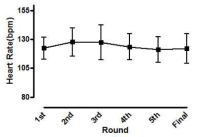
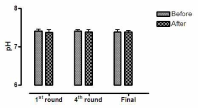

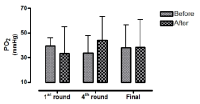
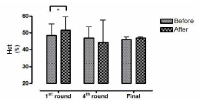
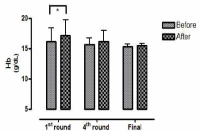
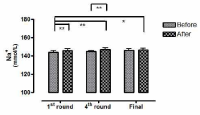
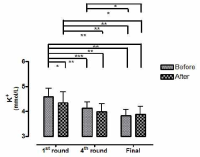


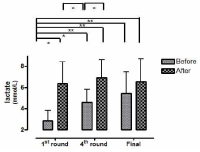
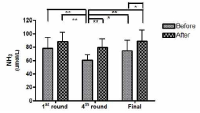
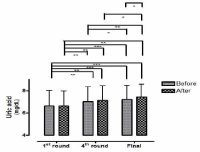
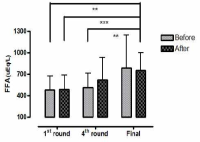

Purpose The purpose of this study is to look into the life of MTB college athletes before and after their college entrances through long-term longitudinal narrative inquiry and investigate how the career exploration after graduation is conducted in a contextual way. Methods For this study, four MTB college athletes who entered the university as specialists are selected as research participants, and their life and career are examined through a long-term longitudinal narrative inquiry. Results As a result, the life and career of MTB college athlete appear as follows. First, MTB college athletes entered MTB because of 'self - will' or 'influence of family and acquaintances' and the motivation is 'extension of hobbies', 'college entrance', etc. Second, the MTB college athletes' training and goals are set in the 'college entrance examination', which means the entrance to higher college. Third, MTB college athletes' college life is closely related to 'management and support system for college athletes', and the career search for them is based on 'the prospect as a player' and 'professional prospect of MTB athletes’. However, MTB college athletes showed their plan B to prepare for their uneasy future or to retire. Conclusions In the end, the MTB college athletes came to think about life and career on the narrow stage of unpopular sports and was seen coming down from the narrow stage of unpopular sports. Based on these results, this study presents critical discussions about their life and career of MTB college athletes and seeks implications for the school elite sports in Korea.

PURPOSE The purpose of this study was to investigate the effects of an 8-week online yoga training on body composition, muscle activity, flexibility, and balance in males (n=7) and females (n=15). METHODS Twenty-two participants were recruited and divided into two groups (Exercise group, n=11 and control group, n=11). All participants had two visits. During the visits, body composition, muscle activity for forward and back-bending poses, flexibility for sitting-forward and back-bending poses, and balance for one-leg standing were determined. After 8-week yoga training, all measurements were re-performed. An independent t-test was performed to determine the difference between the exercise and control groups. A two-way repeated measures of ANOVA was used to assess the interaction effects (group*time). All values were represented as mean ± standard deviation. An α level was set at 0.05 for all analyses. RESULTS First, the height significantly increased (F=16.573, p=0.001) and body fat mass (F=7.109, p=0.015) and body fat percent (F=7.667, p=0.012) were significantly decreased after the 8-week online yoga training. Second, the muscle activity for vatus lateralis doing a back-bending pose (F=6.140, p=0.022) significantly increased after the 8-week online yoga training. Third, the flexibility on sitting-forward bending pose (F=4.661, p=0.043) and back-bending pose (F=11.650, p=0.003) were statistically increased after the 8-week online yoga training. Lastly, balance on the Center Of Pressure (COP) X (F=5.769, p=0.026) and the Center Of Pressure (COP) Y (F=4.365, p=0.05) significantly increased after the 8-week online yoga training. CONCLUSIONS This study will provide scientific evidence on improving exercise programs using online yoga training on physical activity.